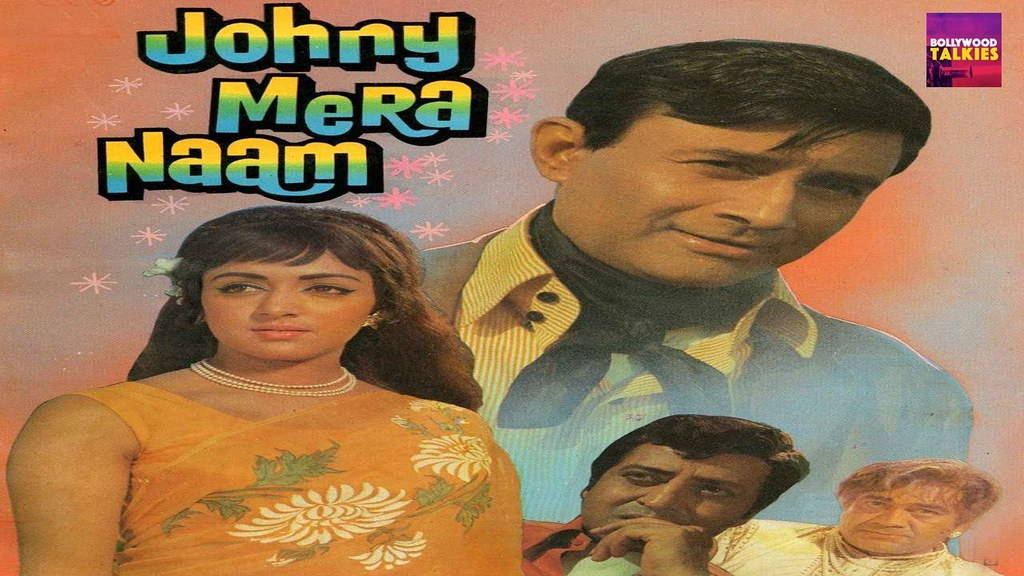Just as accidents have generated several inventions, taunts have also led to great works of art. Kalidas is said to have become a poet in response to his educated wife’s taunt. Similar is the case of Dev Anand-Hema Malini-starrer Johny Mera Naam, the biggest grosser of 1970.
Sharad Dutt, twice national award-winning author and connoisseur of cinema and culture, says that it happened at a party. Raj Kapoor took a jibe at the film distributor Gulshan Rai, telling Rai that people like him (Rai) are good only at selling movies and making money. What do they know about art and cinema, Kapoor asked rhetorically. The snide remark rankled Rai’s heart; he decided to get one up on the legendary showman.
He engaged Vijay Anand, India’s most underrated director who gave such classics as Guide, Jewel Thief, and Teesri Manzil. Rai also decided to make the film with a name sounding similar to that of Kapoor’s ambitious Mera Naam Joker. “Rai went even farther,” Dutt says. “Apart from Raj Kapoor himself, Mera Naam Joker has three heroes in Mera Naam Joker (Rajendra Kumar, Dharmendra, and Manoj Kumar). But I will have three jokers or comedians. On top of that, one actor will perform all three roles.
That is how I.S. Johar’s famous Pehle Ram, Dooje Ram, and Teeje Ram came into being.” Eventually, Rai was able to prove his point; while Mera Naam Joker failed miserably, Johny Mera Naam went on to become not just commercially successful but also a trendsetter, whose themes and formulas got repeated ad nauseam for decades. Which was not surprising, for Mera Naam Joker was a sugary saga of sentimentalism, whereas Johny Mera Naam had the benefit of Vijay Anand’s virtuosity, Dev Anand’s elan, and Hema Malini’s radiance.
Johny Mera Naam was the perfect specimen of the pre-multiplex cinema. It had everything, from a searing bhajan to a sizzling cabaret, from comedy by an inimitable Johar to action and drama. The story is simple. Dev Anand and Pran, as Sohan and Mohan, are brothers. They are good at boxing; it is while boxing with each other that they reunite. A criminal Ranjit (Premnath) gets their father, a cop, murdered. Mohan kills the contract killer. Fearing consequences, he escapes in the boot of Ranjit’s car, not knowing that Ranjit got him orphaned. Mohan grows up as a criminal, now known as Moti.
Sohan, on the other hand, proves to be a chip off the old block, becoming a CID officer, hunting for an international gang whose important member Moti is. It is headed by one Rai Sahab Bhupinder Singh. Posing himself as a petty criminal, he enters the gang with the help of Rekha (Hema Malini). Sohan is told that she is the daughter of Bhupinder Singh. After many adventures, it is revealed that Rekha’s father Bhupinder Singh was actually in the custody of Ranjit who was impersonating as Bhupinder Singh.
Ranjit turns out to be the foster-brother of Bhupinder Singh’s. In the end, of course, the villain gets his just deserts and the hero and the heroine get married. There are many highlights of the movie, including its songs. Pal bhar ke liye koi hamein pyaar karle is remembered for not just the way its lyrics and singing but also picturization. It needs to be mentioned here that Vijay Anand excelled in song picturization; nobody filmmaker, save Guru Dutt, can be called his equal in this department. In this song, Dev Anand keeps moving from one window to the other of the bungalow that seemed to have innumerable windows. Then there is a strip-tease dance by Padma Khanna, Husn ke lakh rang, in which she ends up in a bra and panty—something sensational in an era when sleeveless blouse was the apogee of boldness.
Premnath looks absolutely lecherous when lusting for and lunging at Khanna. Perhaps, the greatest highlight of the movie is the scene in which Bhupinder Singh and Ranjit face each other. We come to know that Singh was an orphan who was adopted by Ranjit’s father, a rich gentleman. As Ranjit proved to be debauched and depraved, the father decided to pass on the entire inheritance, including the title of Rai Sahab, to Bhupinder Singh instead of Ranjit. This is the reason that Ranjit has imprisoned Singh. The latter pleads with him that whatever happened was because their father wanted it so. “Isme meri kya galti thi”(But what was my fault), he asked Ranjit. The repartee was swift, “Tumhari galti yeh thi ke tum ek bahot achhe aadmi the. Aur meri har galti isliye nazar aati thi ke woh tum mein na thi (Your fault was that you were a very good man, and all my failings became evident because these were not in you).” The dialogues in this scene have the Shakespearean quality—the choice of words, the way they were woven into sentences, the irony in them, the overall impact. In this scene lasting a few minutes, Ranjit’s character, cruelty, and mindset is exposed: “Tum kaise jaan sakte the k eek rais aadmi ki fitrat kya hoti hai? Ke paisa udaane ki cheese hai aur jawaani aiyaashi ka ek khoobsoorat mauka hai (How on earth could you have known the nature of a rich man? Money is meant to be splurged and youth is an excellent excuse for debauchery).
Johny Mera Naam regularly appears on cinema channels. It still remains a very entertaining film. Gulshan Rai not only got his revenge but also went on to become a movie mogul. He made many more films, including Amitabh Bachchan-starrer Deewar and Trishul. To add to Raj Kapoor’s woes, Johny Mera Naam flopped, causing huge losses to him.




















